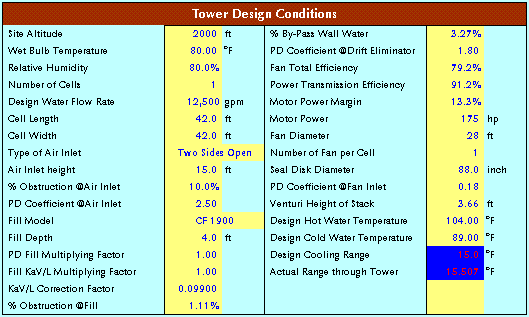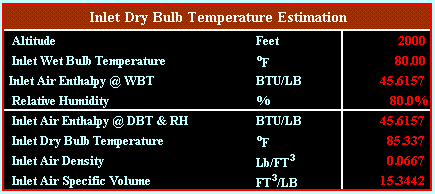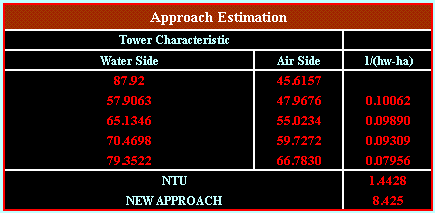|
In regard to the volume of air required for a particular
cooling tower requirement and a particular tower at
high altitude when compared to sea level, the effect
of altitude is two folds. Since it is the mass (or weight)
of air and not the volume that is vital to the tower
performance, the first effect is that, because of altitude
and corresponding reduction in air density, it takes
a larger volume to obtain the required pounds. On the
other hand, because of the higher water partial pressure
which increases the evaporative tendency, the actual
mass of air required for the duty is reduced.
Although it has been recognized
by most cooling tower manufacturers that, for the majority
of operating conditions, the more significant of these
two effect is the evaporative effect, it is generally
assumed they are sufficiently canceling to ignore elevation
in the calculation of the volume of air, and consider
only the reduced static pressure and corresponding reduction
in horsepower resulting from the lower air density.
At the reduced atmospheric
pressure associated with high elevation, the higher
partial pressure of water results in a higher moisture
content in the air at any temperature. This higher moisture
content increases the heat content of the air, or the
temperature-enthalpy plot of saturated air at high elevation
is above the sea level curve.
Example 15-1.
Discuss about the effect of altitude on cooling tower
rating and performance at 2000 feet in the altitude
using the example 13-1.
(Solution)

First, find a dry bulb temperature
at 2000 feet in the altitude for 80% of relative humidity
corresponding 80oF of wet bulb temperature.
First Step: find a
dry bulb temperature for 80% of relative humidity corresponding
80oF of wet bulb temperature at the tower
inlet.

Second Step: Find
an exit air temperature and air volume of fan. The procedure
is exactly same as the contents described in the example
14-1. Refer to it for the details.

Third Step:
Calculate the tower characteristic for the results obtained
above per the performance data provided by the fill
manufacturer.
Fourth Step:
Iterate until NTU satisfies the value of tower characteristic
by changing of approach figure.

Therefore, Actual Cold Water
Temperature = Wet Bulb Temperature + Approach = 80 +
8.425 = 88.425oF
Download
the example file, Version ID-THERMAL/TOWER (idthermal.zip)
This file is same as the example file discussed in example
13-1.
|